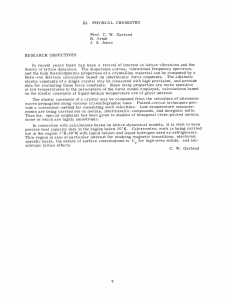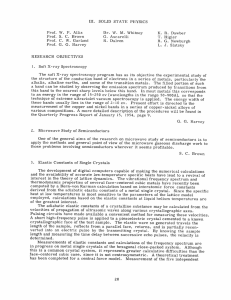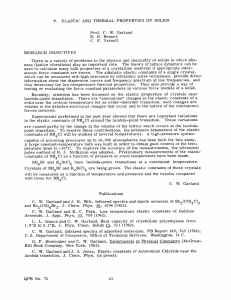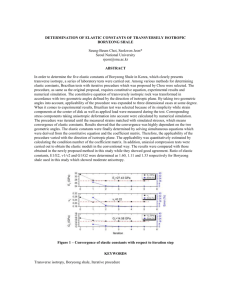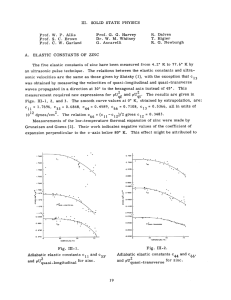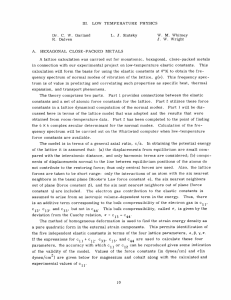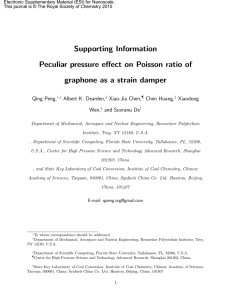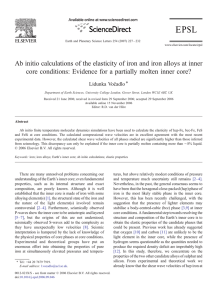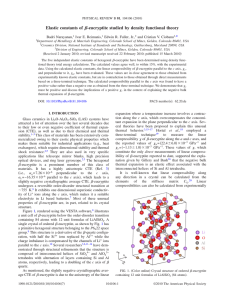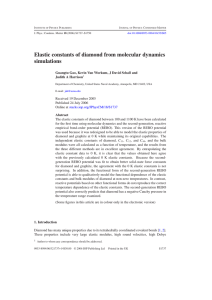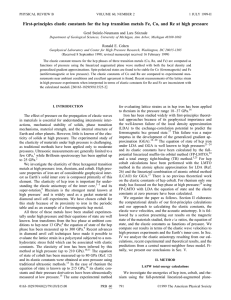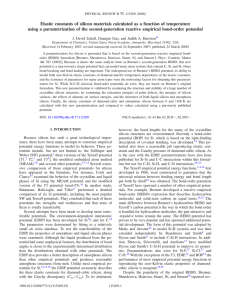IV. LOW TEMPERATURE PHYSICS W. M. Whitney
advertisement
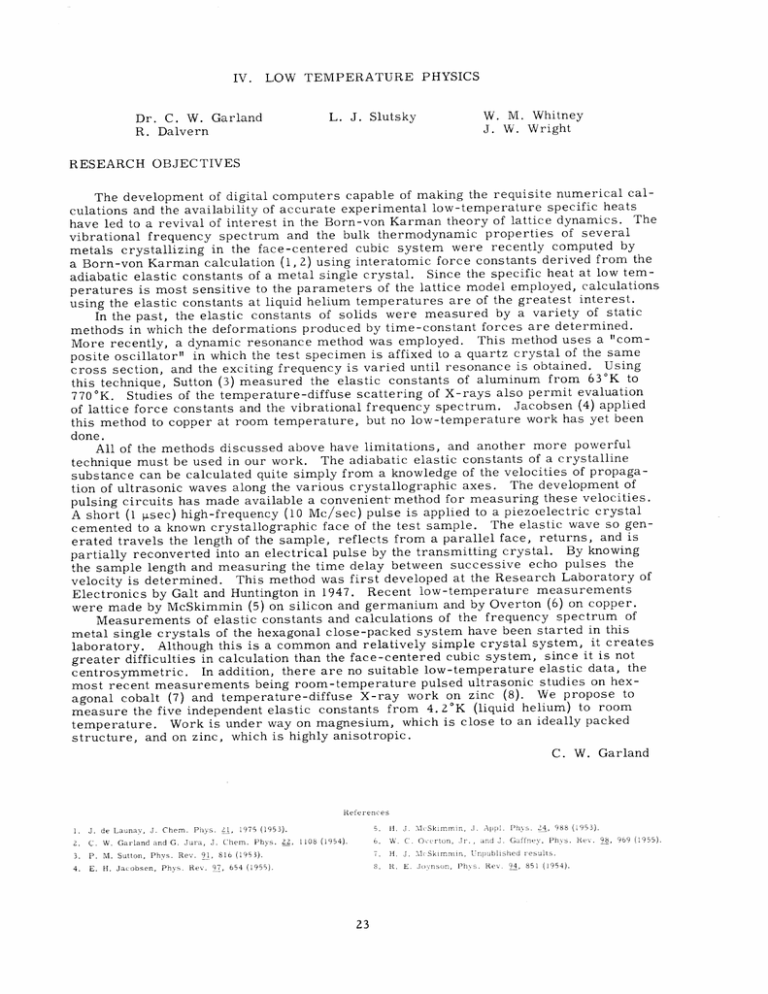
IV. LOW TEMPERATURE PHYSICS Dr. C. W. Garland R. Dalvern J. L. W. M. Whitney J. W. Wright Slutsky RESEARCH OBJECTIVES The development of digital computers capable of making the requisite numerical calculations and the availability of accurate experimental low-temperature specific heats have led to a revival of interest in the Born-von Karman theory of lattice dynamics. The vibrational frequency spectrum and the bulk thermodynamic properties of several metals crystallizing in the face-centered cubic system were recently computed by a Born-von Karman calculation (1, 2) using interatomic force constants derived from the adiabatic elastic constants of a metal single crystal. Since the specific heat at low temperatures is most sensitive to the parameters of the lattice model employed, calculations using the elastic constants at liquid helium temperatures are of the greatest interest. In the past, the elastic constants of solids were measured by a variety of static methods in which the deformations produced by time-constant forces are determined. This method uses a "comMore recently, a dynamic resonance method was employed. crystal of the same quartz a to affixed is specimen test the which in oscillator" posite cross section, and the exciting frequency is varied until resonance is obtained. Using this technique, Sutton (3) measured the elastic constants of aluminum from 63°K to 770 K. Studies of the temperature-diffuse scattering of X-rays also permit evaluation of lattice force constants and the vibrational frequency spectrum. Jacobsen (4) applied this method to copper at room temperature, but no low-temperature work has yet been done. All of the methods discussed above have limitations, and another more powerful technique must be used in our work. The adiabatic elastic constants of a crystalline substance can be calculated quite simply from a knowledge of the velocities of propagation of ultrasonic waves along the various crystallographic axes. The development of pulsing circuits has made available a convenient-method for measuring these velocities. A short (1 psec) high-frequency (10 Mc/sec) pulse is applied to a piezoelectric crystal cemented to a known crystallographic face of the test sample. The elastic wave so generated travels the length of the sample, reflects from a parallel face, returns, and is partially reconverted into an electrical pulse by the transmitting crystal. By knowing the sample length and measuring the time delay between successive echo pulses the velocity is determined. This method was first developed at the Research Laboratory of Electronics by Galt and Huntington in 1947. Recent low-temperature measurements were made by McSkimmin (5) on silicon and germanium and by Overton (6) on copper. Measurements of elastic constants and calculations of the frequency spectrum of metal single crystals of the hexagonal close-packed system have been started in this laboratory. Although this is a common and relatively simple crystal system, it creates greater difficulties in calculation than the face-centered cubic system, since it is not In addition, there are no suitable low-temperature elastic data, the centrosymmetric. most recent measurements being room-temperature pulsed ultrasonic studies on hexWe propose to agonal cobalt (7) and temperature-diffuse X-ray work on zinc (8). measure the five independent elastic constants from 4. ZoK (liquid helium) to room temperature. Work is under way on magnesium, which is close to an ideally packed structure, and on zinc, which is highly anisotropic. C. W. Garland References 1975 (1953). 1. J. de Launav, J. Chem. Phys. Zl, 2. C. W. Garland and G. Jura, J. Chem. Phys. 22, 1108 (1954). 3. P. M. Sutton, 4. E. H. Jacobsen, Phys. Rev. Phys. Rev. 91, 816 (1953). 97, 654 (1955). 5. I. .J. C. 6. W. 7. H. J. 8. R. M Skimmin, J. Overton, Jr., Appl. Phs. 24, 988 (1953). and J. Gaffney, Phys. Rev. 98, McSkimmin, Unpublished results. E. Jonson, Phys. Rev. 94, 851 (1954). 969 (1955).
